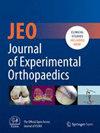Outcome after isolated medial patellofemoral ligament reconstruction is dependent on age but not on body mass index or gender
Abstract
Purpose
Medial patellofemoral ligament (MPFL) reconstruction is the most used surgical technique in the treatment of patellofemoral instability. However, the role of patient specific factors like age, sex and body mass index (BMI) at surgery is being increasingly discussed. The aim of this study was to study the influence of these factors with regards to functional outcomes and redislocation rates.
Methods
All patients with patellofemoral instability, who were treated with isolated MPFL reconstruction surgery between 01/2017 to 01/2022, were included. Patients with pathologic risk factors, high-grade cartilage damage, prior surgeries and age <14 years were excluded. Demographic information and information concerning surgery, complications and history were collected. Patient reported outcome measures (PROMs) were collected preoperatively, after 6 and 12 months postoperatively and at final follow-up using multiple standardised scores (knee injury and osteoarthritis outcome score, International Knee Documentation Committee [IKDC], Tegner activity scale, Kujala, BANFF).
Results
Of the 62 patients included in this study 42 (67.7%) were female with a mean age of 24.8 ± 7.6 years and a mean BMI of 24.5 ± 4.7 kg/m2 at the time of surgery. Final follow-up was 42.3 ± 23.4 months. Fifty-four (90.3%) patients were satisfied with the functional outcome, four (6.5%) patients suffered recurrent dislocation.
Overall, the functional outcome was very good in our study population (e.g., Kujala 87.0 ± 10.5, IKDC 76.4 ± 13.7). In the subgroup analysis, there were no significant differences in the functional outcome between women and men (e.g., Kujala score: 87.2 ± 11.4 vs. 86.4 ± 7.8, p = 0.81) and there was no correlation with BMI at time of surgery (e.g., Kujala, r = 0.11, p = 0.53). However, statistically significant correlations were detected in functional outcome with the age at surgery.
Conclusion
Older age at the time of surgery has a highly significant negative correlation with the functional outcome after isolated MPFL reconstruction. Therefore, surgeons must be highly vigilant and identify high-risk patients even before surgery and necessary MPFL reconstruction should not be delayed.
Level of Evidence
Level III, retrospective cohort study.





 求助内容:
求助内容: 应助结果提醒方式:
应助结果提醒方式:


